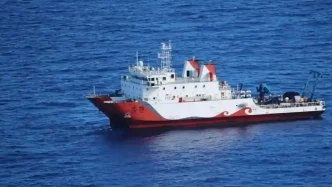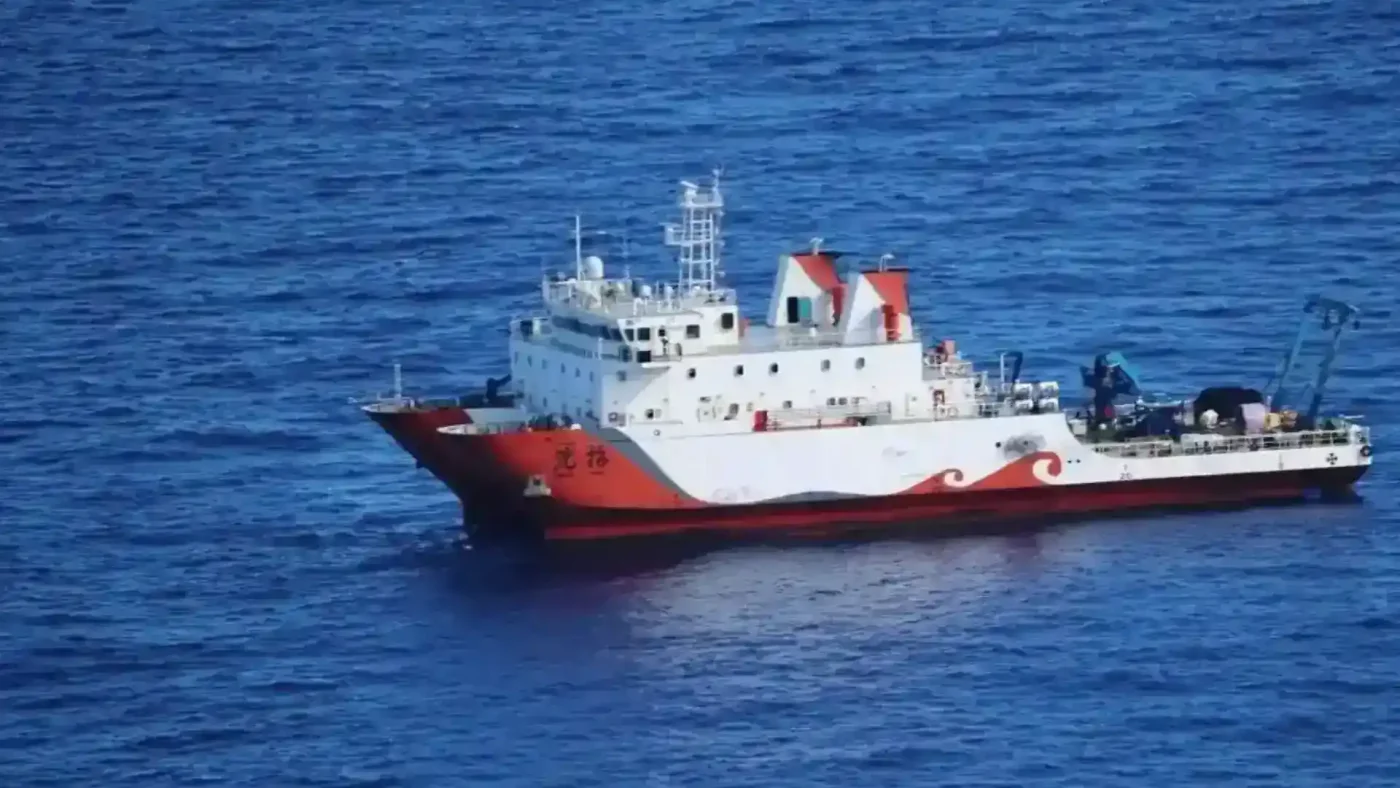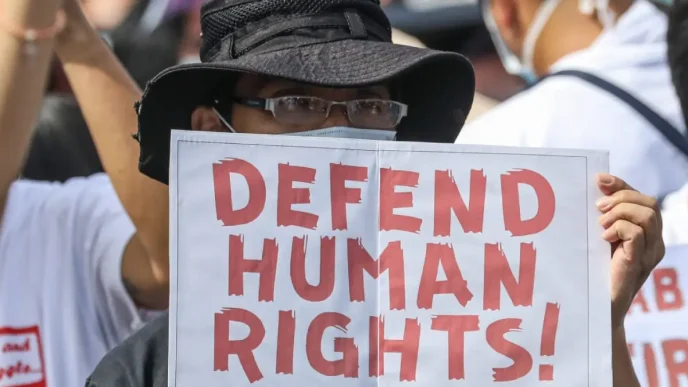A Chinese research vessel, identified as Tan Suo 3, recently departed the Philippines’ exclusive economic zone (EEZ) after lingering off the coast of Ilocos Norte for several days, reigniting concerns over maritime sovereignty and potential underwater exploration activities. The Philippine Coast Guard (PCG) reported the ship’s exit on Tuesday morning, but not before a series of encounters that have heightened tensions in the disputed West Philippine Sea.
Unwelcome Presence in Philippine Waters
The Chinese vessel was first detected on May 1, approximately 170 kilometers off the coast of Burgos town in Ilocos Norte, well within the Philippines’ 200-nautical-mile EEZ. By Tuesday, May 7, the ship had moved further out to 460 kilometers, according to Commodore Jay Tarriela, the PCG spokesperson for the West Philippine Sea. During a press briefing in Manila, Tarriela expressed concern over the vessel’s activities, suggesting they could involve deep-sea mapping potentially linked to submarine navigation.
“It’s worrisome in a way because these Chinese research vessels have the capability for deep-sea mapping. And there is a possibility that they are also doing this kind of deep-sea mapping in support of their submarine navigation” Tarriela told reporters. The PCG deployed one of its most advanced ships, the BRP Teresa Magbanua, along with an aircraft on May 5 to challenge the vessel’s presence. However, they received no response from the Chinese ship.
Deep-Sea Equipment and Unidentified Objects
Adding to the unease, PCG assets observed a manned deep-sea submersible, identified as the Shenhai Yongshi or Deep-Sea Warrior, approaching Tan Suo 3 during their monitoring operations. According to Tarriela, this submersible is designed for deep-sea exploration and scientific research, capable of diving to depths of 4,500 meters. The Chinese crew later retrieved the submersible, alongside a rigid hull inflatable boat used to recover an unidentified yellow piece of equipment linked to marine scientific research.
“During the operation, the PCG spotted a manned deep-sea submersible vessel fast approaching the Chinese research vessel, which was later retrieved by its crew” Tarriela explained. While the exact nature of the equipment remains unclear, its association with China’s marine research activities has fueled speculation about the purpose of the vessel’s presence in Philippine waters.
A Question of Sovereignty
The incident is the latest in a series of maritime encounters between the Philippines and China in the West Philippine Sea, a region of the South China Sea where overlapping territorial claims have long strained relations. The Philippines asserts its rights over the area under the United Nations Convention on the Law of the Sea (UNCLOS), a stance upheld by a 2016 arbitral ruling that rejected China’s expansive claims. Beijing, however, continues to assert control over much of the South China Sea, often deploying vessels—both military and civilian—in contested waters.
Tarriela described the movements of Tan Suo 3 as “inconsistent with the freedom of navigation and indicative of marine scientific research activities, which violate the sovereign rights of the Philippines.” In a statement on Monday, he emphasized that such actions lack legal authority and constitute a breach of Philippine sovereignty. He further noted that the deployment of PCG assets was “successful in preventing the Chinese government from doing marine scientific research and whatever research they are conducting in our exclusive economic zone.”
Under UNCLOS, coastal states like the Philippines have exclusive rights to natural resources and certain research activities within their EEZ. Foreign vessels must obtain permission to conduct scientific research in these waters, a requirement China appears to have disregarded in this instance, if the PCG’s observations are accurate. While no definitive evidence confirms the exact nature of the research, the presence of advanced equipment like the Deep-Sea Warrior suggests capabilities beyond routine navigation.
Broader Implications for Regional Stability
The sighting of Tan Suo 3 comes amid heightened scrutiny of China’s activities in the South China Sea, where it has built artificial islands and deployed naval forces to assert dominance. For the Philippines, these incursions are not merely a matter of territorial integrity but also of national security. The potential for deep-sea mapping, as suggested by Tarriela, raises concerns about military applications, particularly the possibility of data collection for submarine operations in a region already fraught with geopolitical tension.
Analysts point to a pattern of behavior, noting that Chinese research vessels have been spotted in the EEZs of other Southeast Asian nations, including Vietnam and Malaysia, often under the guise of scientific exploration. If confirmed, such activities could provide Beijing with critical underwater terrain data, enhancing its strategic position in potential conflicts. However, without concrete evidence of the vessel’s intent, these remain speculative concerns, and Philippine authorities have yet to release detailed findings on the equipment observed.
The Philippine government has repeatedly called for adherence to international law in resolving disputes in the West Philippine Sea. President Ferdinand Marcos Jr. has emphasized a rules-based approach, seeking to balance diplomatic engagement with China while bolstering defense partnerships with allies like the United States, Japan, and Australia. Recent joint military exercises in the region, including the annual Balikatan drills with the U.S., underscore Manila’s efforts to strengthen its maritime capabilities amid ongoing challenges.
Domestic and International Reactions
Public sentiment in the Philippines has grown increasingly wary of China’s actions, with many coastal communities expressing frustration over perceived encroachments that threaten local livelihoods, particularly fishing. Social media platforms have seen a surge in posts condemning the presence of foreign vessels, with some users calling for stronger government action to protect national waters. While these reactions reflect genuine concern, they also highlight the challenge of addressing complex maritime disputes without escalating tensions.
Internationally, the incident has drawn attention from neighboring countries and global powers with stakes in the South China Sea. The U.S., a treaty ally of the Philippines, has reiterated its commitment to supporting Manila under the Mutual Defense Treaty, though it has stopped short of direct involvement in this specific case. Meanwhile, ASEAN member states, often divided on how to address China’s assertiveness, continue to grapple with crafting a unified response through mechanisms like the long-delayed Code of Conduct for the South China Sea.
Environmental and Economic Stakes
Beyond security concerns, the presence of foreign research vessels in the West Philippine Sea raises questions about environmental and economic impacts. The region is rich in marine biodiversity and untapped natural resources, including potential oil and gas reserves. Unauthorized research activities, if they involve seabed exploration, could disrupt fragile ecosystems or preemptively map resources that fall under Philippine jurisdiction. While no immediate environmental damage has been reported in connection with Tan Suo 3, the lack of transparency surrounding its mission fuels unease among conservationists and policymakers alike.
For local economies dependent on fishing within the EEZ, any disruption—whether through vessel presence or potential resource exploitation—carries significant consequences. The Philippine government has yet to quantify the economic toll of such incidents, but past encounters have led to temporary fishing bans and restricted access for Filipino fishermen, exacerbating tensions with China.
Looking Ahead in Uncertain Waters
As Tan Suo 3 departs Philippine waters, questions linger about the broader implications of its brief but contentious presence. Was this a standalone research mission, or part of a larger strategy to assert influence in the West Philippine Sea? Without direct communication from the Chinese vessel or official statements from Beijing, the answers remain elusive. For now, the Philippine Coast Guard’s response signals a willingness to defend national interests, even as it navigates the delicate balance of diplomacy and deterrence.
The incident serves as a reminder of the fragility of peace in one of the world’s most contested maritime regions. As both sides brace for future encounters, the stakes extend beyond borders, touching on issues of international law, regional stability, and the sustainable use of shared waters. For the Philippines, the path forward will likely involve a mix of vigilance, alliances, and dialogue—an approach that seeks resolution without sacrificing sovereignty.
















